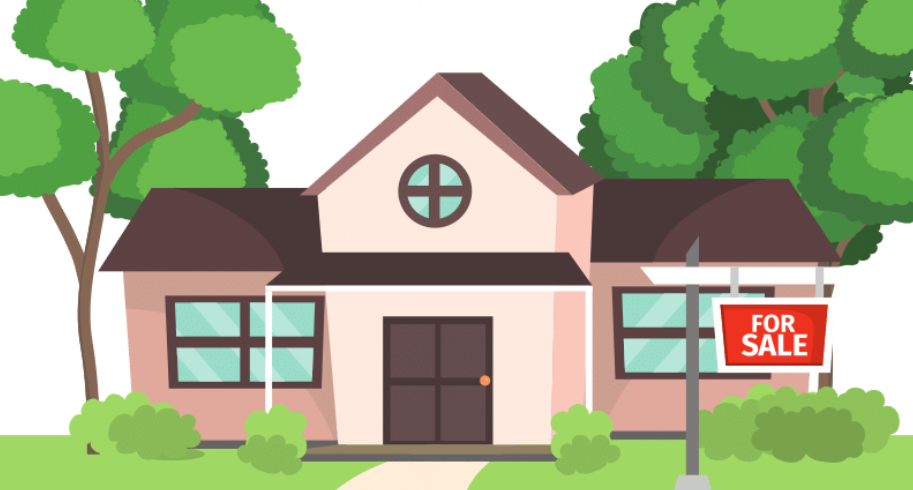If you’re self-employed and want to buy a home, you’ll likely face a bit more scrutiny than borrowers with traditional wages. That’s because mortgage lenders routinely require proof of consistent income for mortgage approval, which can be tricky when you can’t show a W-2 or recent paycheck. Self-employed borrowers should be prepared to provide evidence of active income – simply put, the money you earn for your work.
Determine If You’re Self-Employed
First, you should understand what it means to be classified as self-employed. In general, lenders will consider you self-employed if a significant portion of your income comes from being a gig worker, freelancer or independent contractor.
If you receive 1099 tax forms rather than a W-2 from an employer, that will also indicate self-employment. Lastly, if you own 25% or more in a business, then you’re self-employed as far as the lender is concerned.
While self-employed borrowers are held to the same lending standards as W-2 workers, the mortgage process itself can be more challenging.
Why Are Self-Employed Home Loans More Complex?
In general, lenders are concerned whether all applicants, including self-employed workers, can consistently repay their loans. They’ll need to see that your income is high enough to pay for your mortgage, that it’s likely to remain high, and that you have a good track record of repaying your debts. This is easier to do when income is steady and predictable, which isn’t always the case for self-employed people.
Proving the stability of your business requires documentation, including evidence of work, payments and activity supporting business operations, such as a business website. “Every customer is so uniquely qualified and their businesses are so different, so each one needs to be looked at differently,” says Ashley Moore, community lending manager at JPMorgan Chase.
How Self-Employment Income Is Calculated
Lenders typically look at your income for the past two years – and for the self-employed, it will be your net profit, not your gross income. That is, they will look at the total income you have left after your deducted expenses.
If you earned more in Year 2, they will take an average of the two years. If you made less in Year 2, they will go by the lower-earning year. Lenders might be wary if your income drops significantly, so expect to provide an explanation if that’s the case.
General Requirements for Self-Employed Mortgages
Generally, borrowers need at least two years of self-employment income to qualify for a mortgage, as per Fannie Mae and Freddie Mac guidelines. In some cases, borrowers who are self-employed for just one year may still qualify if they meet other criteria, like working in the years prior in the same occupation with comparable or higher income.
Without two years of business records, you can expect a higher level of scrutiny, and any prior employment will have to be verified, as well.
How to Get Approved for a Mortgage If You’re Self-Employed
Qualifying for a mortgage when you’re self-employed means showing the lender that you can make payments for the entire length of the loan.
Here’s what lenders want to see from self-employed mortgage applicants:
- Stable or increasing income. Some fluctuation is acceptable, but that’s why lenders like to see two full years of tax returns. Lenders are looking for the worst-case scenario, so they will probably consider the lower of the two years when crunching their numbers. Be mindful that significant decreases in income from year to year might raise additional questions during underwriting because the lender may see that as a sign that your business is declining. Self-employed mortgage applicants may also be asked to provide a year-to-date profit-and-loss statement as well as business deposit account statements for the most recent months.
- Consistent work. Ideally, you should have at least two years of self-employment income in the same industry. If you’re newly self-employed, some lenders will make an exception if you have one year of self-employment tax returns plus W-2s from an employer in the same field. Still, a short history of self-employment may make it more difficult to assure lenders that your income will remain consistent.
- Good credit. You’ll need a track record of repaying your debts. Foreclosures, delinquencies, collections, repossessions and bankruptcies increase risk for the lender. Lenders will review the type, age, use, status and limits of your revolving credit accounts as well as how often you applied for credit in the last year. “There are a lot of different loan programs and products that require different credit criteria, and that’s going to look the same for a borrower whether they are self-employed or have a W-2,” says Moore.
- Low debt-to-income ratio. Lenders typically look for a debt-to-income ratio – the percentage of your monthly income you put toward paying your debt – to be 43% or lower. If your debt payments are perceived as unmanageable for your income, you might not qualify for the amount you need to purchase a home or receive an offer at all.You’ll also want to be careful if you’re self-employed and tend to deduct a fair amount of business expenses. This can hamper qualification since mortgage underwriters typically look at income after expenses. “The problem that we run into is a self-employed borrower can write a lot of things off,” says Sean Cahan, president of Cornerstone First Mortgage in San Diego. So those savvy deduction moves that help at tax time could end up reducing your bottom line, which can then impact the DTI.
However, Cahan notes that loan officers who have experience working with this type of borrower should know how to interpret a tax return and run the proper calculations in these cases. He recommends that self-employed people simply ask the loan officer to show them the actual worksheet the officer used to come up with the effective income amount. “If they don’t know how to break it down for you, move on to the next lender,” he says.
- Cash reserves. Your mortgage payment is due every month, even when work has dried up or if your business goes through a seasonal slump. Lenders may want to see that you have an emergency fund to get through months when you’re not earning as much. But again, that doesn’t mean self-employed borrowers are held to a higher threshold. “Compensating factors are going to help any borrower,” says Moore.
- Significant down payment. A hefty down payment of 20% or more can offer more assurance to lenders, but down payment requirements for self-employed workers with good credit and enough income are usually no different from other borrowers. However, a larger down payment can be helpful. “Putting more money down will help your DTI ratio,” says Cahan. But if the loan is not likely to be approved because of other challenges, a larger down payment probably won’t tip the scales to an approval.
Document Requirements for a Mortgage When You’re Self-Employed
Lenders require complete financial documentation for a mortgage application. When you’re self-employed, you’ll need to provide both business and personal financial documents. Many lenders will require income verification early in the mortgage timeline and then again just before closing. Although requirements will vary by lender, be prepared to submit:
- Government-issued identification.
- Complete personal tax returns for two years.
- Business tax returns for two years.
- IRS Form 4506-T, which gives third parties permission to access your tax records.
- Earnings statements.
- Business and personal bank statements.
- Asset account statements, such as retirement or investment accounts.
- Business name verification.
- Business license.
- List of your debts and expenses, both business and personal.
- Canceled checks for your rent or mortgage.
- Any additional income, such as Social Security or disability.
Some lenders may require further documentation, such as statements from your accountant and clients. Be sure your documents are up to date and organized before you submit.
Mortgages backed by government-sponsored enterprises Fannie Mae and Freddie Mac require verification of business operations, so you may need to provide evidence of work, such as invoices, business payments or active websites. These measures are normally required 120 days before closing on a mortgage, but self-employed borrowers may have to offer proof of steady income again as the closing date approaches.
How to Plan for a Mortgage When You’re Self-Employed
If you’re self-employed and considering a home purchase in the next few years, take these steps to make yourself a more attractive borrower:
- Establish a track record of self-employment work. Maintain consistent work as much as possible. Try to time your mortgage application after two to three years of consistently strong earnings. At that point, lenders are less likely to be concerned about income instability, and you may qualify for a higher loan amount.
- Improve your credit. Check your credit report to identify any problems you may need to fix before a mortgage lender pulls your credit. Lenders may reject your application or charge you a higher interest rate if you have a low credit score, so contact the credit bureau to correct any errors you find. Look for other concerns, such as high credit limit use, and work to improve those areas.
- Pause other credit activity. Do not apply for other loans or credit cards in the months leading up to your mortgage application, as this will harm your credit rating.
- Pay down debt. You can boost your credit score by paying off some or all of your debt. This will also lower your DTI, which will make getting a mortgage easier.
- Save as much as possible. Don’t drain your savings on the down payment. A healthy emergency fund can put lenders at ease; they like knowing that you can still make payments during work droughts or that you can afford surprise home repairs.
- Maintain clean business records. Make it easier for lenders to understand your business income. Separate your business and personal finances by using business checking and savings accounts as well as credit cards. Keep track of invoices and monthly expenses, and create an updated earnings statement at least quarterly. Be sure to retain your records when you file taxes each year.
- Don’t believe the misconceptions. Though there may be more paperwork, lenders are open to working with self-employed borrowers. “We look at each individual based on their entire financial picture,” says Moore.
Types of Self-Employed Home Loans
If you’re self-employed, you can explore the same mortgage programs as others – including conventional loans, Federal Housing Administration loans, Veterans Affairs loans and U.S. Department of Agriculture loans. You’ll still need to meet each program’s criteria in order to qualify, as well as provide any additional documentation related to your self-employed status.
What If You Don’t Qualify?
If you’ve only been in business a short while or have a past line of work that doesn’t qualify as related to your current business, you might consider an alternative loan program called a nonqualified mortgage. Because these loans do not follow government guidelines as a qualified mortgage does, a non-QM offers more leeway when it comes to underwriting them for business owners.
In order to make a non-QM mortgage work, you’ll likely need a large down payment and may have higher interest rates or fees than standard home loans. Because you don’t have two years of business tax returns, lenders will look at your bank statements instead to get a sense of your cash flow. Using those documents, they can determine how much income you have coming in on a regular basis. Once you eventually have enough business history to qualify for a regular mortgage, you might try refinancing your non-QM loan.
However, be sure to work with a reputable lender if you decide to pursue a non-QM loan, since these aren’t as regulated as traditional home loans.
Source: money.usnews.com ~ By: Dawn Papandrea ~ Image: Canva Pro










